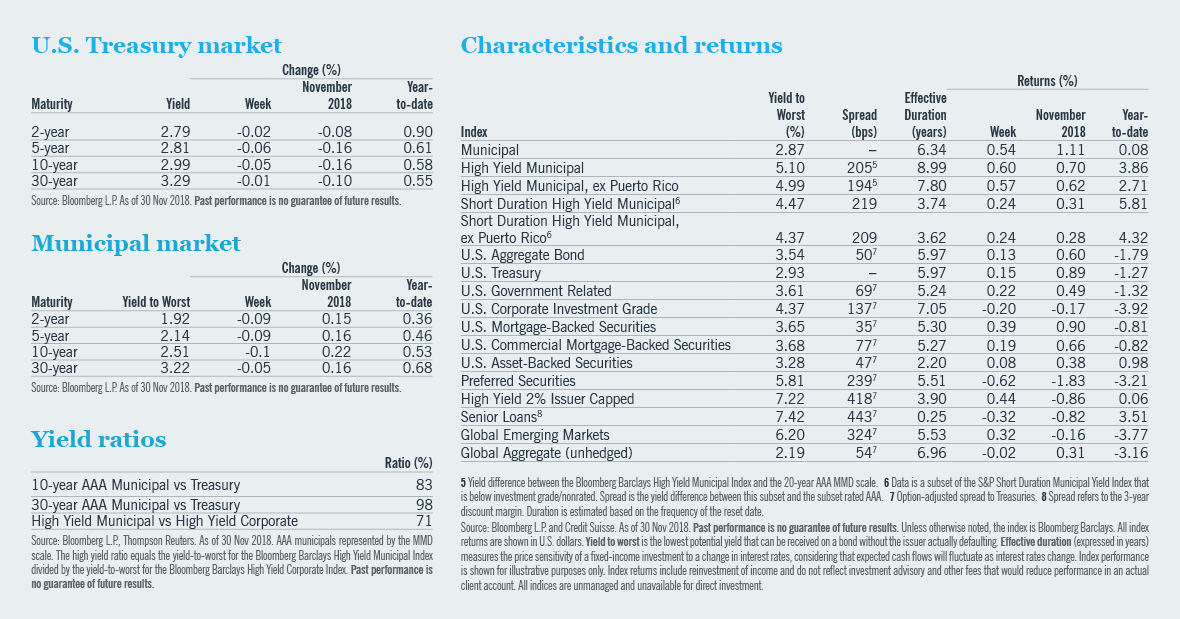In Focus: Credit Cycle Still Has Legs
Corporate bond spreads continue to increase, renewing investor concerns that the credit cycle may be ending. While the cycle is in the late stages, we do not believe we have reached its end.
Recessions have not occurred historically until at least nine months after the Fed has concluded its rate hikes. The most recent Fed projections for the fed funds rate call for one more increase in 2018 and three additional hikes in 2019. We’ll learn if that’s still the number when the Fed reveals its latest “dot plot” at its December meeting. In any event, we would expect a pause in monetary policy action by the Fed before the onset of a recession.
Earnings growth remains strong, holding at 25 percent year over year for the last two quarters.1 Some of this strength is related to stimulative fiscal policies (e.g. corporate tax cuts and government spending increases), but healthy revenue gains indicate that these policies aren’t the sole driver of robust earnings. Prior to previous recessions, earnings growth has also tapered before turning negative. Therefore, we expect to see downward pressure on earnings before anticipating an imminent recession.
Since we are in the late stages of the credit cycle, strong bottom-up credit research remains critical to minimize pitfalls and generate diversified sources of income.

William Martin is CIO of taxable fixed income at TIAA Investments. John V. Miller leads the municipals fixed income strategic direction and investment perspectives for Nuveen.
1 Bloomberg L.P.
2 The Bond Buyer, 30 Nov 2018.
3 Lipper Fund Flows.
4 Market Insight, MMA Research, 28 Nov 2018.








